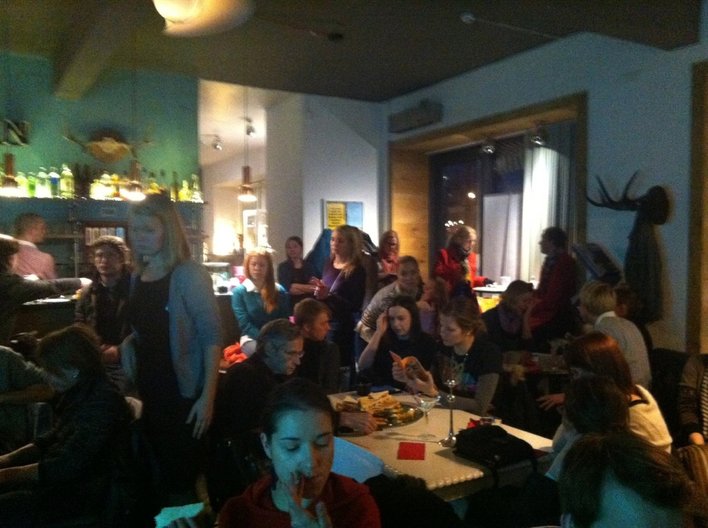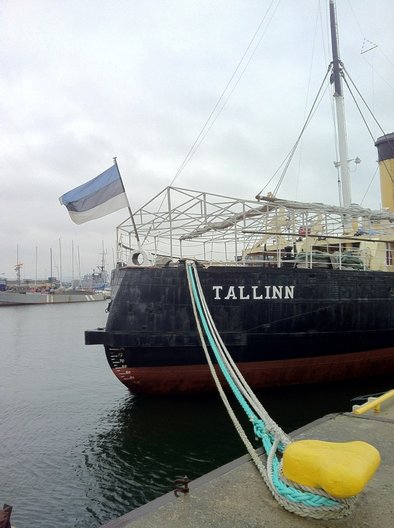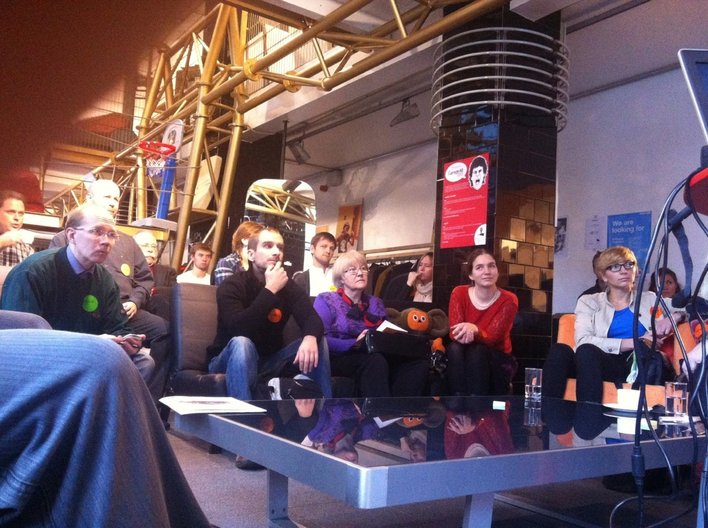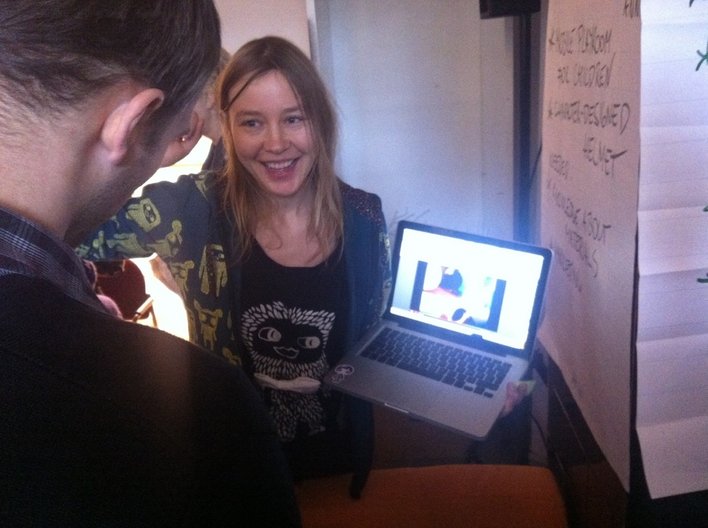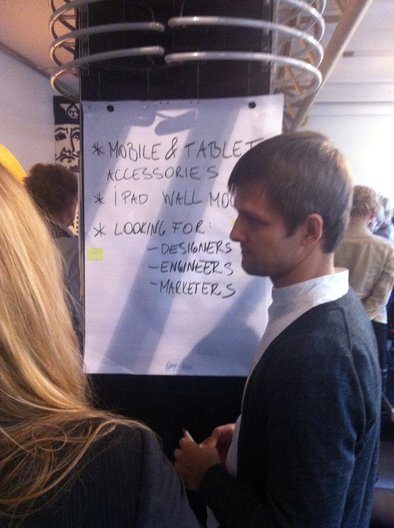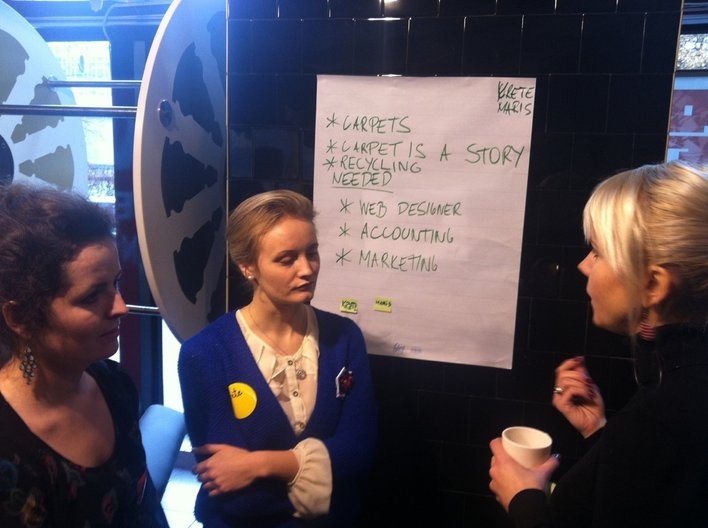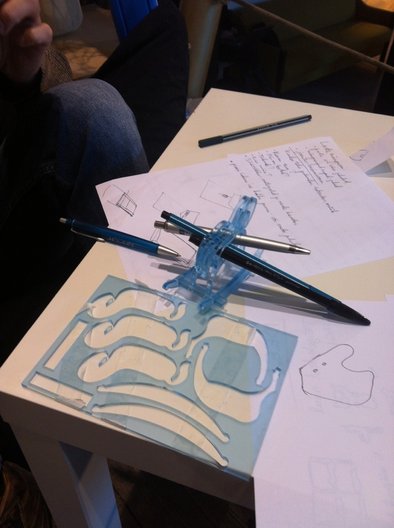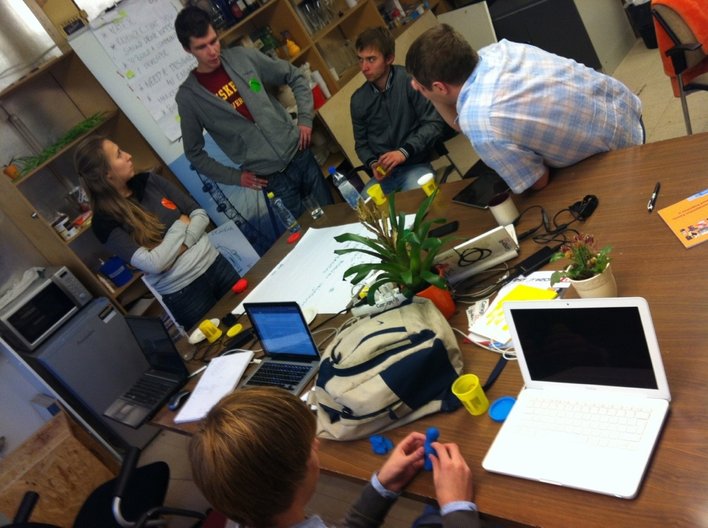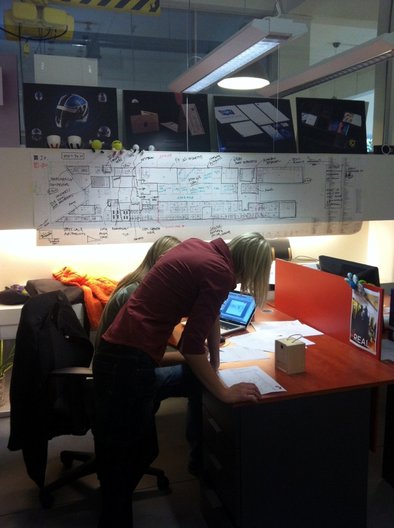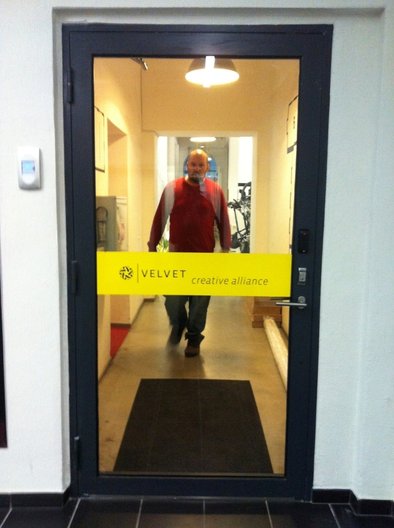29 November 2012
by Gianpaolo Fusari
On early November I was invited by the British Council to a series of creative events in Tallinn, the Estonian capital. Kadri Talvoja was my point of contact in Tallinn and she soon introduced me to some Estonian customs and traditions. The first event Kadri invited me to was an Afternoon Tea talk at Klaus Kohvic, a small coffee shop near the sea, which also hosts a contemporary Estonian design gallery. A tight group of about 40 people gathered in the event chaired by Markko Karu - head of Brand Manual. I talked about my experience through my (short) design career. The event ended with an open Q&A session and an interesting debate about national design identity and the collaborative role the designer plays in the larger economy. Markko guided me through the café’s design gallery and explained how the Estonian design scene is small but creative; everyone knows each other. He only regrets that not everyone is open to sharing resources. This is why many Estonian designers move abroad or search for collaborations outside of Estonia. Even so, the exhibition at the Klaus Kohvic is proof that some designers in Estonia come together to share resources and show their work collectively.
Tallinn is a small city so we walked over to the Brand Manual studio making a quick stop at the Linnahall, an abandoned concert hall built by the Soviets in time for the Moscow ’80 Olympics. There had been plans to renovate the impressive structure in time for Tallinn’s role as Culture Capital in 2011 but so far nothing has been done with the building, which has inspired some heated debates among Tallinners. At the Brand Manual studio Markko introduced me to some of his work in the service design area and to his uncompromising design ethos shown in their work for brands such as Viru beer.
The next day Helen Unt from Creative Estonia (Loov Eesti) invited me to visit Velvet Creative Alliance where we met Janno Siimar and his team. Velevet is one of the main design houses in Estonia. They have a few multidisciplinary creative units that work collaboratively on projects of various scales and complexity, from visual identity to software development, design strategy and animation. Janno gave us a tour of the studio where his team showed us a few of the projects they are working on including the new Estonian National Museum in Tartu.
The main event I took part in was organised by Creative Estonia, an initiative by Enterprise Estonia funded by the European Social Fund. Creative Estonia aims to promote the value of the creative industries as well as provide support to develop new creative businesses in Estonia. They hold several startup events throughout the year to help people with an entrepreneurial spirit get their ideas to the next level. On this occasion the event was called TeamLab and it was held at the Garage48 creative hub.
People with business ideas were invited to present their proposals to an audience of designers, engineers, business minds, and the general public. The way the event works is simple: “ideators” are given 5 minutes to pitch an idea and express their needs in order to take the concept forward, for example a designer with a product idea might need the expertise of an engineer for production details and a marketing expert to promote the product. Once all the ideas are presented the floor is opened to people to go around and ask questions. Here is where the idea owners need to attract and persuade people to join their team. After team formation, the rest of the day is dedicated to refining the concepts, identifying needs and forming an action plan. Some teams quickly started building basic prototypes with play-doh and cardboard while others were putting their efforts into brainstorming completely different ideas from what they originally had. On the second day the teams dedicate their time into developing business models and a business proposition that is presented to a jury panel at the end of the event. Throughout the two days the teams receive coaching form design, IT, engineering and entrepreneurship mentors. My role during the event was to provide an introduction to different design methodologies and help the teams in developing their concepts.
The projects presented were all very different from each other. Some were products while others presented a service; one may be handcraft and another may be industrial. So the judges did not have an easy decision to make! In the end, the winning idea was the graduation project of Anna, an industrial designer who identified the need for an object that could aid parents in bathing small children in public pools. Anna had done a lot of work on this project. Currently, she has a fully developed concept and has produced a looks-like mock-up. I thought the idea was very useful yet simple enough to have great potential to become a manufactured product. All in all, this is a project that will greatly benefit from the support that Loov Eesti has provided. Anna and her new team now have the opportunity to present their project at Ajujaht, the biggest entrepreneurship competition in Estonia.
I was very positively impressed during my short stay in Tallinn and I saw many good ideas and proposals being taken forward by individuals and organisations. I'm sure Estonia will soon have a large number of successful startups if it continues promoting this kind of initiatives.
